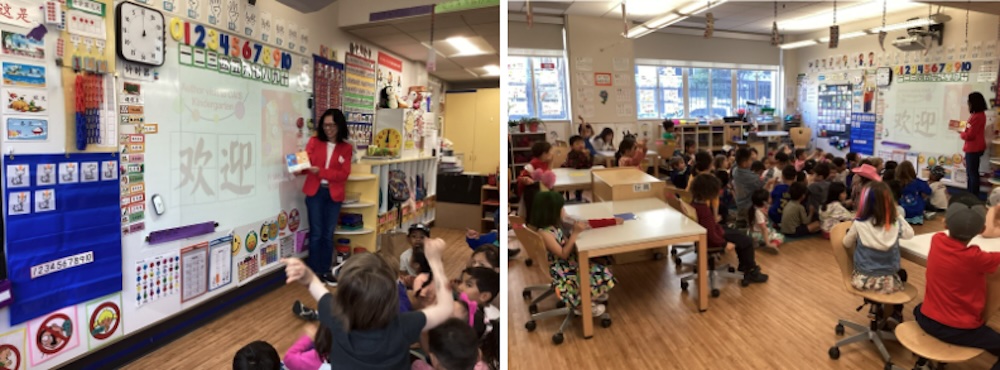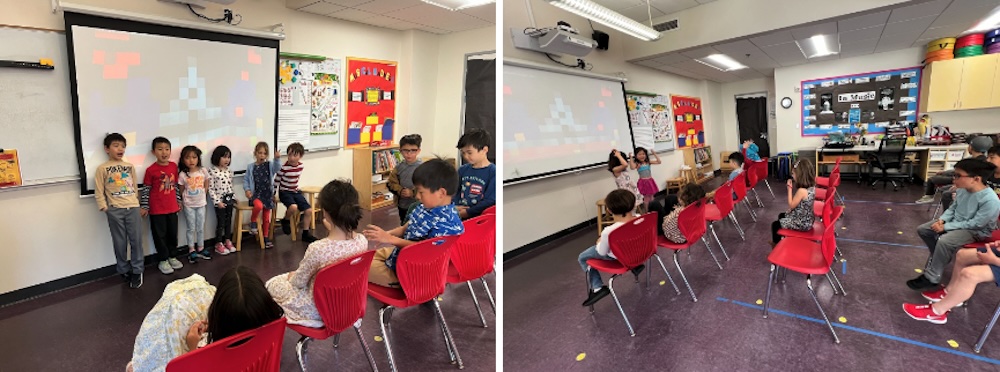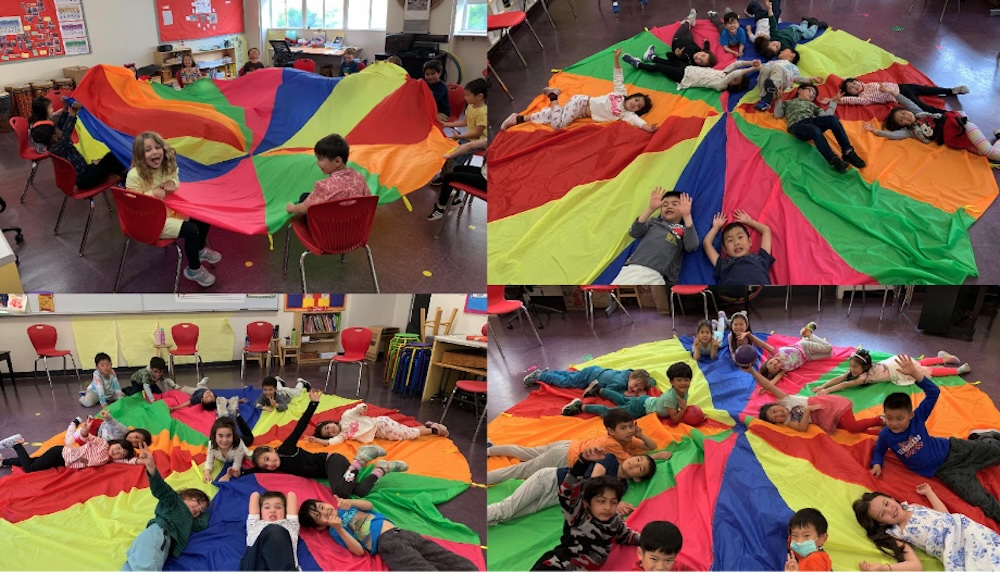Here are a selection of quick Kindergarten teacher recaps from ECD Head Wei Qian’s and Intern ECD Head Kimberly Kaz’s newsletters this year to give a peek into the Kindergarten classrooms in action.
From the Kindergarten Chinese Classrooms

We had the opportunity to have author Karen Wong come into our classroom to read her book, ABC Dim Sum (點心) to us! It was fun getting to find all the various items you might see at a dim sum restaurant, and we even got a chance to learn how to make an origami heart, as the Chinese character “心“ in “點心” literally means heart.
From Zhou Laoshi’s Music Studio

K and 1 musicians have been taking the initiative to lead the class in singing and moving to our favorite songs! This is a safe environment for them to take risks and learn the value of performance, as well as practice encouraging friends. The laughter and excitement we share further solidifies a sense of community while fostering musicianship skills of tunefulness, beatfulness, and artfulness.
From Li Laoshi’s PE and Movement Classroom
We’ve been using a parachute to enhance our teamwork and coordination skills while having a fantastic time together!

From Ms. K and Ms. Christine’s Classroom

Kindergarteners created their own self portraits incorporating their favorite ocean and tide pool animals inspired by one of our Women’s History Month changemakers, Frida Kahlo.
